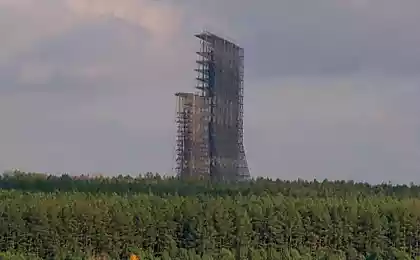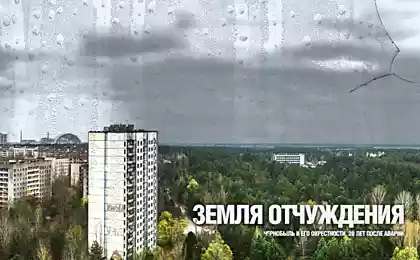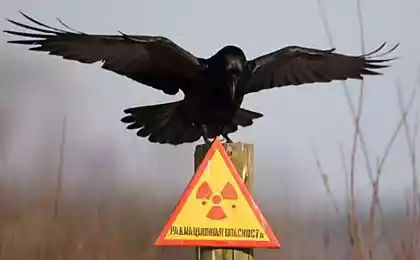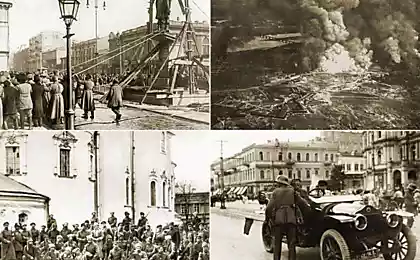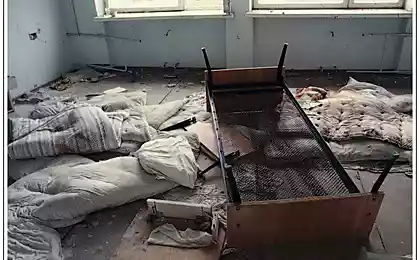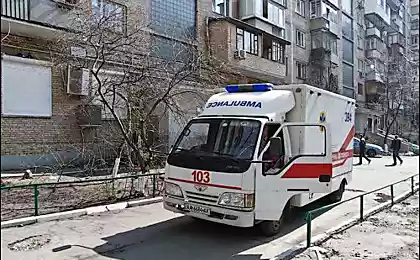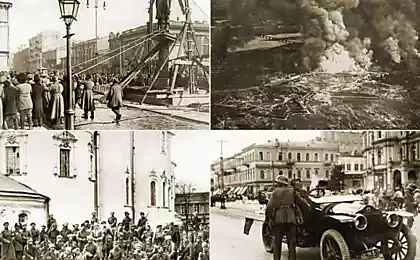667
The second "Chernobyl" in Kiev
Residents and visitors are not even aware that walking in the streets of Kiev, they expose themselves to mortal danger. If we analyze the most dangerous objects that may give the impression that Kiev specially bustles with chemical "mine", he wrote today, & quot; Newspaper in Kiev & quot ;. For example, near the metro station "Forest" land a few meters inside impregnated with mercury. In Akademgorodok - the deadly metal stocks, and the museum in Pirogovo is two steps away from the radioactive burial ground. But the saddest thing is that up to potentially dangerous objects no one cares, says the newspaper.
via
16 photos

We begin near the metro station "Forest". 200 tons of mercury leaked into the soil and the foundations of buildings of the former plant "radical" does not seem to interest anyone. Since 1954, there used mercury for the production of caustic soda, and the imperfection of technology implied the existence of so-called "planned leak».
Today, the plant itself does not exist: he declared bankrupt, and his body, located near the metro station "Forest", are busy with numerous offices and small businesses. Closely adjacent to the plant market. The new owners of factory buildings reluctant to answer questions about mercury, the newspaper said.

Entrepreneurs say: "We have a work permit in the room means that health services believe that everything is in order. But what can be done with the mercury that has penetrated a few meters into the ground? »
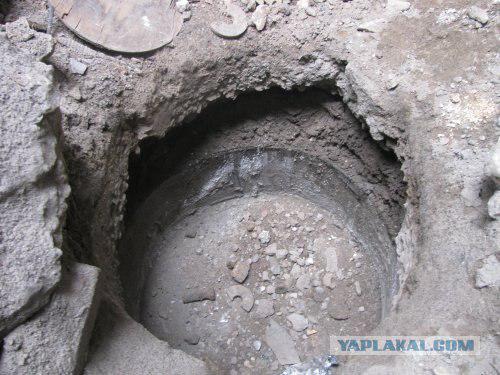
The head of the information center AER "Zeleny Svit" Sergey Fedorinchik expressed his opinion: "I think any serious detox on the" radicals "are not carried out. Mercury is not only ingrained in the ground, but in the wall. Of course, there are ways to cope with it, but the problem on a serious cleaning just was not posed. And on the "radicals" in the Fifties produced and dusts, tons of the most powerful carcinogen and today are scattered the territory. "
It should be noted that the "radicals" are connected all sorts of "chemical emergency": for example, recently from a leaking truck at the entrance of the plant resulted nine kilograms of mercury. Yes, and promises authorities to remove contaminated soil at the burial ground in the Donbass (of which the official city newspaper "Khreschatyk") is hardly feasible. In any case, as told us Sergey Fedorinchik in Nikitovka, which was once the mercury plant is now no mercury waste for recycling do not accept.
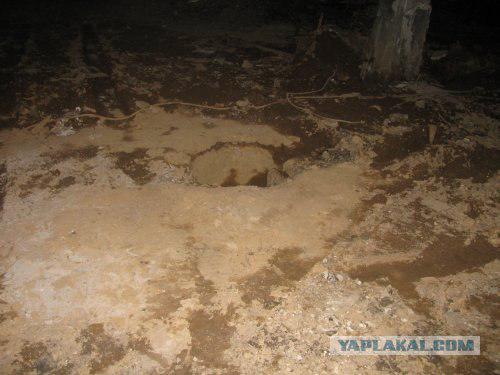
Fast forward now in a different area of the capital - Akademgorodok. Beryllium is enough to poison the whole of Ukraine. Beryllium - highly toxic element, the maximum permissible concentration of dust or fumes in the air which is only 0, 001 mg / m3. Inhalation of beryllium dust leads to a deadly lung disease berylliosis dangerous and determine its presence in the air only by means of a special chemical laboratory which currently there is no money even for reagents. 111 containers of beryllium 20 years are stored in the middle of residential neighborhoods Akademgorodok - the territory Former secret plant "West".
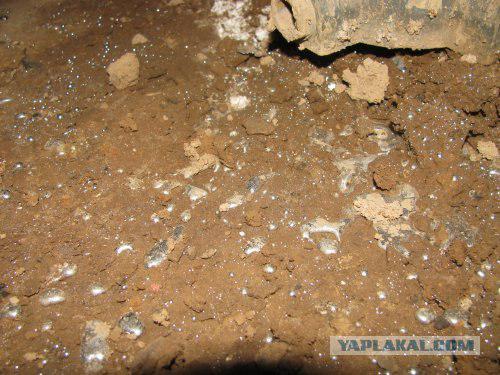
Chief engineer Nikolay Tishchenko repeatedly wrote to the Cabinet with a request to help pay off the debts of the business, including wages, which workers do not see the second year. "Once the secret plant" West "worked" in the cosmos. " Beryllium is needed because it is one and a half times lighter than aluminum and at the same time stronger than many specialty steels. After the collapse of the USSR the production of rolled up, and the dust, tiles workshop and tools - all have been collected in containers and left in a former shop ", - he explained the chief engineer.

Containers with beryllium - approximately three by three meters, black metal boxes - stacked in several rows in a cold room with dim lights, water puddles on the floor and wires fire alarm system. If you do not know what danger is hidden, you might think that you are on a normal stock. In the neighboring shops is still a glimmer of life.
According to Nikolay Tishchenko, "for removal and disposal of containers should be approximately 13 million hryvnia. They are not here. A number of employees dismissed from the end of March. Perhaps even soon have to guard the containers with beryllium is simply no one. "
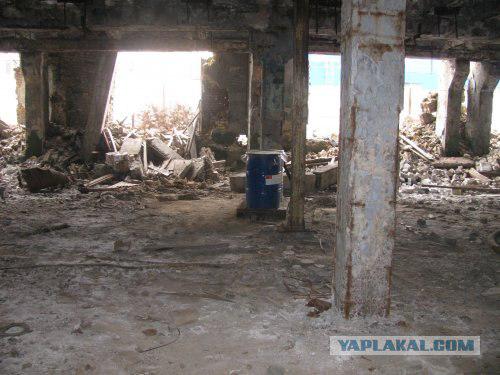
And, finally, about the museum in Pirogovo. Resonance accident with a hit of radioactive elements in the environment took place in the distant 1995, when the river Vita revealed traces of "fonyaschego" tritium. Then the people of Kiev and learned about the existence of Pirogovo burial of radioactive waste. Which today takes the radioactive waste industry and medicine from six neighboring areas.
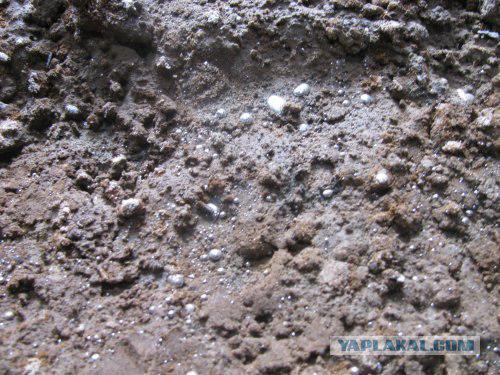
Director of Works Vladimir Andrievsky assures: "After that accident three waste storage facility was decommissioned, they have built over shelter. But the elimination of consequences continues today: at the expense of city administration we take out and transport the contaminated waste. However, if the work suddenly stopped, radioactive isotopes can occur again not only in the Vite, but also in the river. "
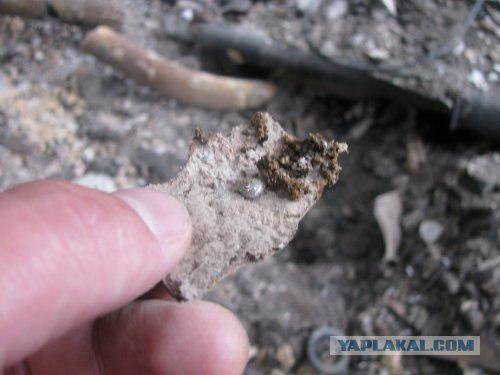
According to Vladimir Zakharovich, from the Ministry of Emergency Situations, which governs "Radon", the company received money only for salaries. On energy, for taxes to support the normal operation of special plant is not listed nor penny.
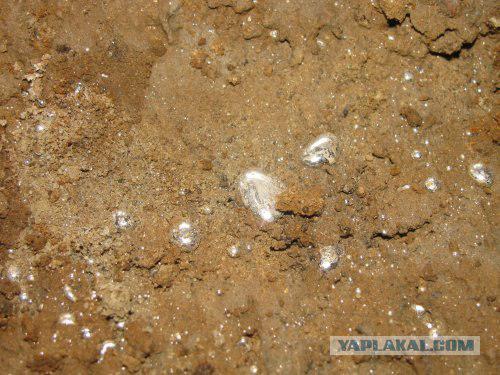
We promise that as soon as at Chernobyl will be commissioned complex "Vector", our waste will take to get from Kiev. But when it will be - is unknown. Meanwhile, if a month does not begin to do the financing, the normal functioning of the complex would be under threat of & quot ;, - he said.

HOW DANGEROUS IS IN KIEV muck
- The company "West" (Vernadsky Prospekt, 38): containers with toxic beryllium;
- JSC "Kievryba" (Povitroflotskyi Ave., 62): A few years ago the accident occurred with the release of ammonia;
- Special plant "Radon" (village Pirogovo street. Communal 1) radioactive waste;
- Refrigerated №4 (ul. Ak. Biletskiy, 34): used in the production of ammonia;
- Refrigerated №2 (pos. Krasnoarmeysky): used in the production of ammonia;
- Dnieper water station (village ICE): in the cleaning process used chlorine and ammonia, an additional risk factor - worn-out equipment;
- Desna water station (Navoi avenue, 1) in the cleaning process used chlorine and ammonia, an additional risk factor - worn-out equipment;
- The plant "Radical" (metro station "Forest"): mercury penetrated a few meters into the ground;
- Bortnychi WWTP: sludge from septic tanks - a potential hotbed of typhoid, dysentery, moreover, it contains toxic substances;
- .Institut Physical Chemistry (Ave of Science, 31): waste radioactive cobalt

On the left bank of Kiev suburb discovered large deposits of mercury in the open air, life-threatening not only the inhabitants of forests, but the whole city, especially in the summer. Video showing the soil at the plant "Radical", "saturated" balls of the dangerous substance, appeared May 5 in several metropolitan Internet forums. Two days later the site & quot; Kiyani & quot; released information that mercury from a bankrupt plant (near metro station "Forest"), someone steals as evidenced by the freshly dug grooves designed to run-off poisonous substance.
The situation at the "radical" is "steadily threatening" and in recent years has not changed, shared observations with the online newspaper "NOW" Vladimir Boreyko, head of the Kiev Ecological and Cultural Center. According to him, information about the presence of large deposits of mercury in the open on the premises received by environmentalists in 1996 and repeatedly confirmed. This means that people in a radius of several hundred kilometers, is in danger.
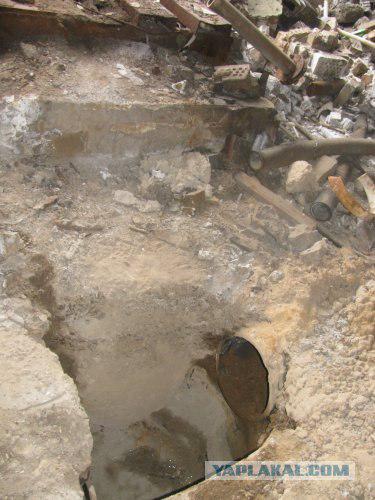
Problem №2, according to Boreyko is the fact that on the ground, soaked in a poisonous substance, are going to begin construction. According to him, the land around the factory already set aside for construction of a new residential neighborhood without conducting environmental assessments and remediation (artificial re-creation of soil fertility).
"The land, which was very long under the influence of heavy metals can not be so easy to be allocated under granted, not to mention the fact that there were people and build kindergartens" - said the ecologist.
How much mercury is in the "Radical" - a mystery. Attempts to get this information to environmental success is not unsuccessful. A year ago, the Ministry of Emergencies has issued order to classify information in these public institutions.
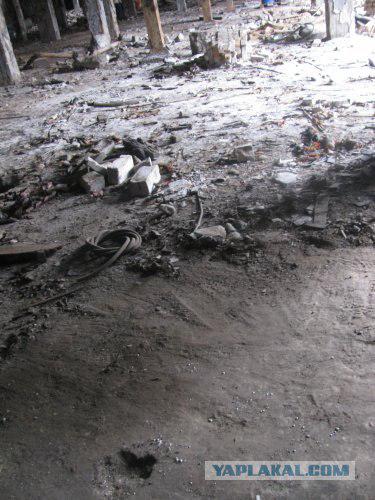
Help could be the Ministry of Environmental Protection, which authorized to examine and continued Boreyko. For this purpose, according to Law "On Ecological Expertise", we need only the initiative of the Cabinet, local authorities or public organizations.
Because time is short, ecologist urged local residents to organize action groups and to seek their own examination.
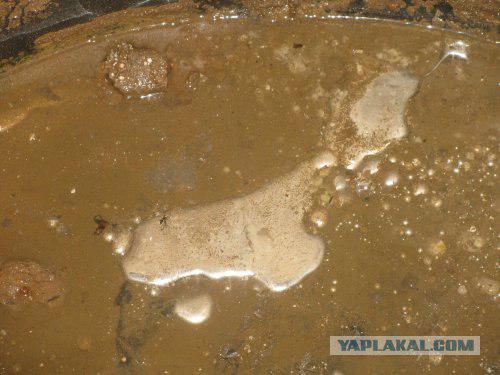
Help:
Mercury - a venom enzyme, having an affinity for thiol groups. Acute metal mercury (vapor) causes airway inflammation with the development of interstitial pneumonitis leading to respiratory failure, reports Infobud. Fast mercury vapor from entering the central nervous system causes a concomitant symptoms, including tremors and hyperexcitability.
Chronic poisoning mercury vapor primarily affects the central nervous system. Among initial symptoms include fatigue, anorexia, weight loss and gastrointestinal disorders. Increased duration of exposure or vapor concentrations causes a characteristic shaking hands with an arbitrary movement characteristic of mercury poisoning.
Chronic poisoning inorganic mercury compounds also causes neurological changes described above, it is characterized by excessive salivation, loss of teeth, gingivitis and stomatitis. Skin contact mercury salts can cause the development of hypersensitivity reactions, ranging from mild erythema to marked extent shelled dermatitis. Acrodynia, or pink disease, develops in young children and can be mistaken for Kawasaki disease.
For chronic poisoning are also typical generalized rash, irritation, photophobia, hypertrichosis and profuse sweating, accompanied by desquamation of the skin feet and hands. This can be observed hyperkeratosis of the skin and swelling of the hands and feet.
Source:
via
16 photos

We begin near the metro station "Forest". 200 tons of mercury leaked into the soil and the foundations of buildings of the former plant "radical" does not seem to interest anyone. Since 1954, there used mercury for the production of caustic soda, and the imperfection of technology implied the existence of so-called "planned leak».
Today, the plant itself does not exist: he declared bankrupt, and his body, located near the metro station "Forest", are busy with numerous offices and small businesses. Closely adjacent to the plant market. The new owners of factory buildings reluctant to answer questions about mercury, the newspaper said.

Entrepreneurs say: "We have a work permit in the room means that health services believe that everything is in order. But what can be done with the mercury that has penetrated a few meters into the ground? »

The head of the information center AER "Zeleny Svit" Sergey Fedorinchik expressed his opinion: "I think any serious detox on the" radicals "are not carried out. Mercury is not only ingrained in the ground, but in the wall. Of course, there are ways to cope with it, but the problem on a serious cleaning just was not posed. And on the "radicals" in the Fifties produced and dusts, tons of the most powerful carcinogen and today are scattered the territory. "
It should be noted that the "radicals" are connected all sorts of "chemical emergency": for example, recently from a leaking truck at the entrance of the plant resulted nine kilograms of mercury. Yes, and promises authorities to remove contaminated soil at the burial ground in the Donbass (of which the official city newspaper "Khreschatyk") is hardly feasible. In any case, as told us Sergey Fedorinchik in Nikitovka, which was once the mercury plant is now no mercury waste for recycling do not accept.

Fast forward now in a different area of the capital - Akademgorodok. Beryllium is enough to poison the whole of Ukraine. Beryllium - highly toxic element, the maximum permissible concentration of dust or fumes in the air which is only 0, 001 mg / m3. Inhalation of beryllium dust leads to a deadly lung disease berylliosis dangerous and determine its presence in the air only by means of a special chemical laboratory which currently there is no money even for reagents. 111 containers of beryllium 20 years are stored in the middle of residential neighborhoods Akademgorodok - the territory Former secret plant "West".

Chief engineer Nikolay Tishchenko repeatedly wrote to the Cabinet with a request to help pay off the debts of the business, including wages, which workers do not see the second year. "Once the secret plant" West "worked" in the cosmos. " Beryllium is needed because it is one and a half times lighter than aluminum and at the same time stronger than many specialty steels. After the collapse of the USSR the production of rolled up, and the dust, tiles workshop and tools - all have been collected in containers and left in a former shop ", - he explained the chief engineer.

Containers with beryllium - approximately three by three meters, black metal boxes - stacked in several rows in a cold room with dim lights, water puddles on the floor and wires fire alarm system. If you do not know what danger is hidden, you might think that you are on a normal stock. In the neighboring shops is still a glimmer of life.
According to Nikolay Tishchenko, "for removal and disposal of containers should be approximately 13 million hryvnia. They are not here. A number of employees dismissed from the end of March. Perhaps even soon have to guard the containers with beryllium is simply no one. "

And, finally, about the museum in Pirogovo. Resonance accident with a hit of radioactive elements in the environment took place in the distant 1995, when the river Vita revealed traces of "fonyaschego" tritium. Then the people of Kiev and learned about the existence of Pirogovo burial of radioactive waste. Which today takes the radioactive waste industry and medicine from six neighboring areas.

Director of Works Vladimir Andrievsky assures: "After that accident three waste storage facility was decommissioned, they have built over shelter. But the elimination of consequences continues today: at the expense of city administration we take out and transport the contaminated waste. However, if the work suddenly stopped, radioactive isotopes can occur again not only in the Vite, but also in the river. "

According to Vladimir Zakharovich, from the Ministry of Emergency Situations, which governs "Radon", the company received money only for salaries. On energy, for taxes to support the normal operation of special plant is not listed nor penny.

We promise that as soon as at Chernobyl will be commissioned complex "Vector", our waste will take to get from Kiev. But when it will be - is unknown. Meanwhile, if a month does not begin to do the financing, the normal functioning of the complex would be under threat of & quot ;, - he said.

HOW DANGEROUS IS IN KIEV muck
- The company "West" (Vernadsky Prospekt, 38): containers with toxic beryllium;
- JSC "Kievryba" (Povitroflotskyi Ave., 62): A few years ago the accident occurred with the release of ammonia;
- Special plant "Radon" (village Pirogovo street. Communal 1) radioactive waste;
- Refrigerated №4 (ul. Ak. Biletskiy, 34): used in the production of ammonia;
- Refrigerated №2 (pos. Krasnoarmeysky): used in the production of ammonia;
- Dnieper water station (village ICE): in the cleaning process used chlorine and ammonia, an additional risk factor - worn-out equipment;
- Desna water station (Navoi avenue, 1) in the cleaning process used chlorine and ammonia, an additional risk factor - worn-out equipment;
- The plant "Radical" (metro station "Forest"): mercury penetrated a few meters into the ground;
- Bortnychi WWTP: sludge from septic tanks - a potential hotbed of typhoid, dysentery, moreover, it contains toxic substances;
- .Institut Physical Chemistry (Ave of Science, 31): waste radioactive cobalt

On the left bank of Kiev suburb discovered large deposits of mercury in the open air, life-threatening not only the inhabitants of forests, but the whole city, especially in the summer. Video showing the soil at the plant "Radical", "saturated" balls of the dangerous substance, appeared May 5 in several metropolitan Internet forums. Two days later the site & quot; Kiyani & quot; released information that mercury from a bankrupt plant (near metro station "Forest"), someone steals as evidenced by the freshly dug grooves designed to run-off poisonous substance.
The situation at the "radical" is "steadily threatening" and in recent years has not changed, shared observations with the online newspaper "NOW" Vladimir Boreyko, head of the Kiev Ecological and Cultural Center. According to him, information about the presence of large deposits of mercury in the open on the premises received by environmentalists in 1996 and repeatedly confirmed. This means that people in a radius of several hundred kilometers, is in danger.

Problem №2, according to Boreyko is the fact that on the ground, soaked in a poisonous substance, are going to begin construction. According to him, the land around the factory already set aside for construction of a new residential neighborhood without conducting environmental assessments and remediation (artificial re-creation of soil fertility).
"The land, which was very long under the influence of heavy metals can not be so easy to be allocated under granted, not to mention the fact that there were people and build kindergartens" - said the ecologist.
How much mercury is in the "Radical" - a mystery. Attempts to get this information to environmental success is not unsuccessful. A year ago, the Ministry of Emergencies has issued order to classify information in these public institutions.

Help could be the Ministry of Environmental Protection, which authorized to examine and continued Boreyko. For this purpose, according to Law "On Ecological Expertise", we need only the initiative of the Cabinet, local authorities or public organizations.
Because time is short, ecologist urged local residents to organize action groups and to seek their own examination.

Help:
Mercury - a venom enzyme, having an affinity for thiol groups. Acute metal mercury (vapor) causes airway inflammation with the development of interstitial pneumonitis leading to respiratory failure, reports Infobud. Fast mercury vapor from entering the central nervous system causes a concomitant symptoms, including tremors and hyperexcitability.
Chronic poisoning mercury vapor primarily affects the central nervous system. Among initial symptoms include fatigue, anorexia, weight loss and gastrointestinal disorders. Increased duration of exposure or vapor concentrations causes a characteristic shaking hands with an arbitrary movement characteristic of mercury poisoning.
Chronic poisoning inorganic mercury compounds also causes neurological changes described above, it is characterized by excessive salivation, loss of teeth, gingivitis and stomatitis. Skin contact mercury salts can cause the development of hypersensitivity reactions, ranging from mild erythema to marked extent shelled dermatitis. Acrodynia, or pink disease, develops in young children and can be mistaken for Kawasaki disease.
For chronic poisoning are also typical generalized rash, irritation, photophobia, hypertrichosis and profuse sweating, accompanied by desquamation of the skin feet and hands. This can be observed hyperkeratosis of the skin and swelling of the hands and feet.
Source:
